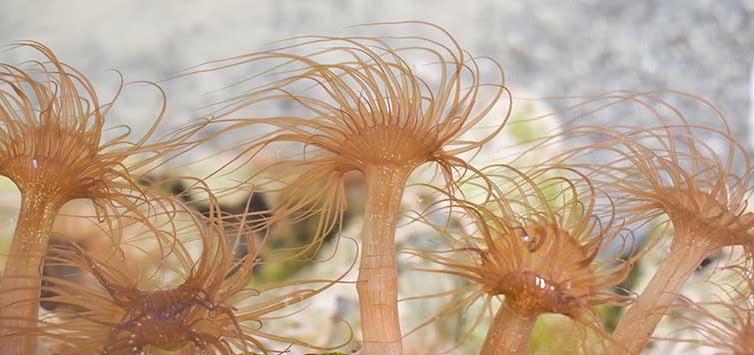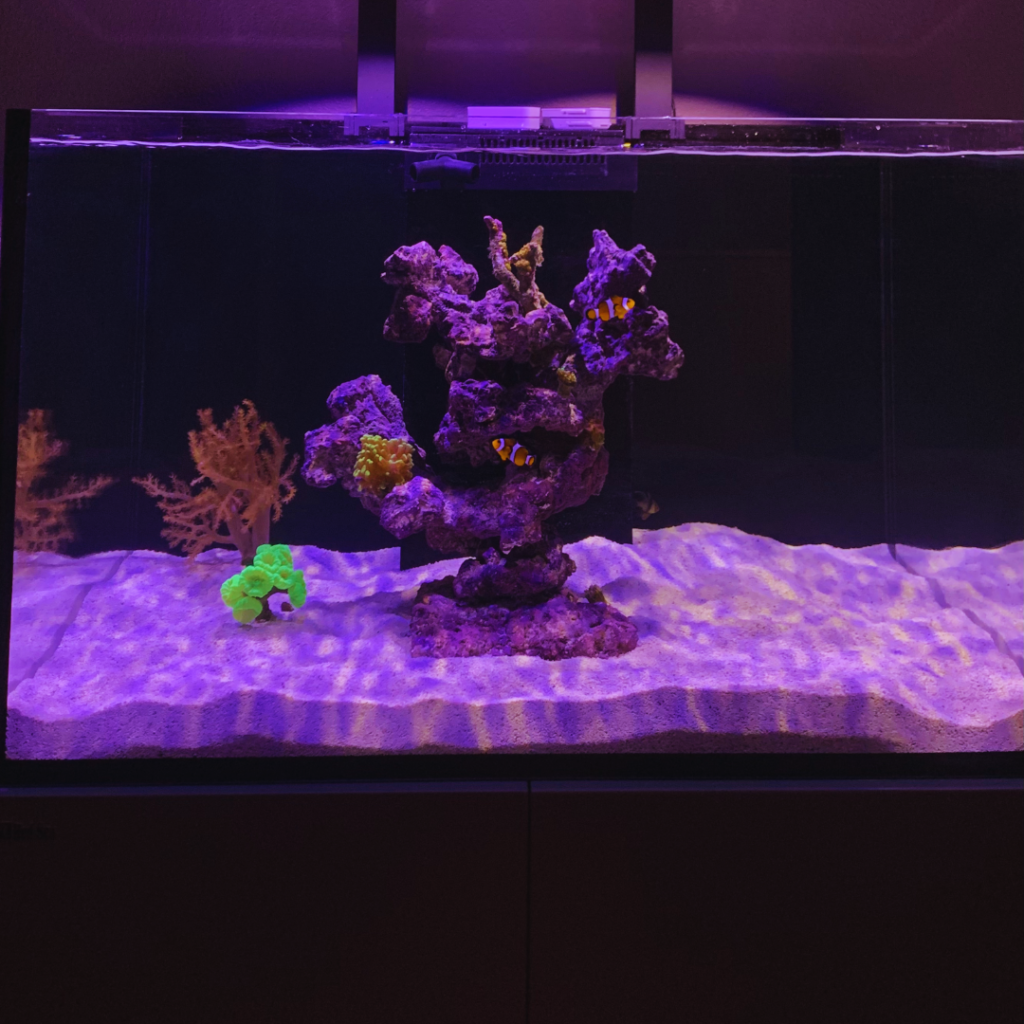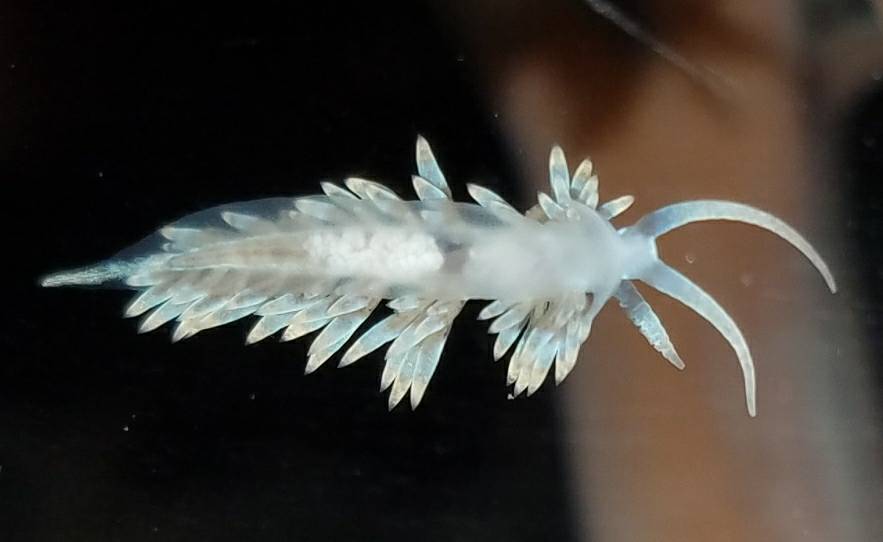Berghia nudibranchs are small, colorful sea slugs that have gained popularity in the reef aquarium hobby for their appetite for Aiptasia, a nuisance anemone that can be challenging to control.
These fascinating creatures offer a natural and effective method for keeping Aiptasia populations in check while being safe for your reef system.
In this article, we will explore the characteristics of Berghia nudibranchs, their feeding habits, the benefits of having them in your reef aquarium, and their reef compatibility.
What are Berghia Nudibranchs?
Berghia nudibranchs (Berghia stephanieae) are a species of sea slug found in the tropical waters of the Atlantic Ocean, the Caribbean Sea, and the Gulf of Mexico.
They belong to the family Aeolidiidae and are characterized by their elongated, semi-transparent bodies adorned with elegant cerata, finger-like appendages that run along their backs.
Berghia nudibranchs typically measure between 0.5 to 1 inch (1.3 to 2.5 cm) in length and are well-known for their ability to consume Aiptasia anemones.
What Do Berghia Nudibranchs Eat?

Berghia nudibranchs feed exclusively on Aiptasia anemones, a type of cnidarian that can quickly overpopulate and cause harm to coral reefs and reef aquariums.
Aiptasia can reproduce rapidly through a process called pedal laceration, making them difficult to control. They also possess stinging cells called nematocysts, which can irritate and damage corals and other invertebrates in your reef tank.
The Berghia nudibranch has a specialized diet that targets Aiptasia, making them an ideal solution for controlling this invasive species in your reef aquarium. They are able to consume anemones of various sizes, from small, newly established polyps to larger, mature individuals.
You may also like: Peppermint Shrimp: The Colorful Aiptasia Assassin
Benefits of Having Berghia Nudibranchs in Your Reef Aquarium:
- Natural Aiptasia Control: Berghia nudibranchs provide a natural, chemical-free method of controlling Aiptasia populations in your reef tank. By consuming these nuisance anemones, they help to protect your corals and invertebrates from the negative effects of Aiptasia.
- Low Maintenance: Berghia nudibranchs require minimal care and attention, making them an easy addition to most reef aquariums. As long as there is a sufficient population of Aiptasia for them to feed on, they will thrive in your tank.
- Fascinating Behavior: Berghia nudibranchs exhibit interesting behaviors, such as laying spiral-shaped egg masses and changing color to blend in with their surroundings. Their presence adds an extra layer of intrigue and beauty to your reef aquarium.
Related: Berghia Nudibranch vs. Aiptasia Eating Peppermint Shrimp (Ultimate Guide)
Are Berghia Nudibranchs Reef Safe?

Berghia nudibranchs are considered reef safe, as they do not harm corals, fish, or other invertebrates in your aquarium.
Their specialized diet means they will only consume Aiptasia anemones, making them a safe and effective option for controlling this invasive species.
However, it is important to note that once the Berghia nudibranchs have eliminated the Aiptasia population in your tank, they may starve if not provided with a new source of food.
To maintain a healthy population of Berghia nudibranchs, you may need to introduce additional Aiptasia or transfer them to another tank with an Aiptasia problem.
Lifespan and Breeding: A Short but Productive Life
Berghia nudibranchs have a relatively short lifespan of approximately 9-12 months. However, they are prolific breeders and can lay up to 1,000 eggs at a time.
Their quick reproduction rate means that a small population of Berghia nudibranchs can rapidly grow, ensuring efficient Aiptasia control in your aquarium.
To optimize Berghia Nudibranch Breeding conditions:
- Stable water parameters: Maintain stable water conditions with a temperature between 72-78°F, a pH of 8.1-8.4, and a specific gravity of 1.023-1.025. Consistent water parameters will reduce stress on the nudibranchs, enhancing their ability to reproduce.
- Ample Aiptasia supply: A healthy population of Aiptasia anemones in your aquarium will ensure that the Berghia nudibranchs have a continuous food source to support their growth and reproduction.
- Safe egg-laying sites: Providing ample live rock and hiding spaces in your aquarium can help create suitable egg-laying locations for the Berghia nudibranchs. These spaces will also offer protection for the vulnerable larvae during their early stages of development.
- Gentle water flow: A moderate water flow is essential to ensure that the nudibranchs can easily move around the tank and find suitable mates. However, avoid strong currents that could dislodge egg ribbons or make it difficult for the nudibranchs to move.
- Regular tank maintenance: Regular tank maintenance, including water changes and cleaning, will help maintain a healthy environment for both the Berghia nudibranchs and other tank inhabitants.
- Consider adding a refugium: Incorporating a refugium in your aquarium setup can provide a safe space for Berghia nudibranch larvae to grow and develop. A refugium can also help maintain water quality and promote a stable environment for your nudibranchs.
By creating an ideal environment for Berghia nudibranchs, you can encourage their breeding and help maintain a thriving, self-sustaining population that effectively keeps Aiptasia anemones in check.
Acclimation: Introducing Berghia Nudibranchs to Your Tank
Proper acclimation is crucial for the success of Berghia nudibranchs in your saltwater aquarium. Gradually introduce them to your tank’s water by using the drip acclimation method over the course of an hour.
This slow process will help minimize stress and increase their chances of survival in their new environment.
Compatibility with Other Tank Inhabitants
Berghia nudibranchs are generally peaceful, but it’s essential to consider their compatibility with other tank inhabitants. Some fish and invertebrates, such as wrasses, may prey on Berghia nudibranchs.
Carefully research potential tank mates to ensure the safety and success of your Berghia nudibranch population.
Related: Aiptasia Eating Filefish: The Ultimate Solution for Aiptasia Control
My experience using berghia nudibranch to get rid of aiptasia

My reef tank had been thriving for months, with vivid corals and fascinating marine life creating a lively aquatic environment. However, the day came when I discovered an unwelcome guest on one of my utter chaos zoanthid frags: an Aiptasia Anemone.
I knew I needed to take action, and that’s when I came across the Berghia nudibranch as a potential solution. These small sea slugs are known to prey exclusively on Aiptasia, and I was eager to see if they could be the answer to my problem.
Upon receiving my Berghia nudibranchs, I carefully acclimated them and introduced them into my reef tank. I held my breath, watching as they began to explore their new environment. They quickly disappeared into my live rock and were not seen again until my lights shut off at night.
It wasn’t long before I witnessed the first Berghia nudibranch voraciously consuming an Aiptasia anemone, and I could hardly contain my excitement. Over the next few weeks, I watched in amazement as the Berghia nudibranchs did what they do best: hunt and consume Aiptasia.
I began to notice a significant decline in the population, and my once-troubled tank was gradually returning to its former glory. The Berghia nudibranchs were not only effective at controlling the Aiptasia infestation, but they also added an interesting dynamic to my tank’s ecosystem (even though they were hard to spot)
Introducing Berghia nudibranchs to my reef tank was a turning point in my battle against Aiptasia. With the Berghia nudibranchs’ help, I was able to regain control of my tank, protect my corals, and continue my journey in reef keeping with newfound wisdom and confidence.
Final Thoughts

Berghia nudibranchs offer a natural, effective, and reef-safe solution for controlling Aiptasia anemones in your reef aquarium.
These fascinating creatures not only protect your corals and invertebrates from harm but also add an interesting element of biodiversity to your tank.
By understanding their feeding habits, benefits, and compatibility with other reef inhabitants, you can successfully integrate Berghia nudibranchs into your aquarium ecosystem and enjoy the advantages they bring in maintaining a healthy and vibrant reef environment.
To learn more about other beneficial organisms and ways to improve your reef tank, check out this informative article on Bio S Nitrifying Bacteria and be sure to explore other resources available on ReeferWiki.com for more guidance on all aspects of reefing.



